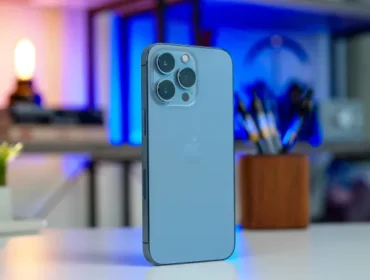Safety glasses are an essential piece of personal protective equipment (PPE) in many workplaces. Whether you work in construction, healthcare, or manufacturing, the potential hazards you face on a daily basis can be significant. Safety glasses are designed to protect your eyes from flying debris, chemicals, and other harmful materials. However, foggy lenses can reduce visibility and hinder your ability to perform your job safely. That’s where anti fog safety glasses come in.
Understanding the Science Behind Foggy Glasses
To understand how anti-fog safety glasses work, it’s important to first understand how fog forms on regular glasses. Fog is essentially tiny water droplets that form on a surface when warm, humid air comes into contact with a colder surface. In the case of glasses, your body heat warms the lenses, and when the warm air hits the cooler lenses, it condenses into tiny droplets that create fog. There are different types of fog, including advection fog, radiation fog, and evaporation fog.
Anti-Fog Coating Technology
Anti-fog safety glasses are designed to prevent fog from forming on the lenses. This is accomplished through the use of special coatings on the lenses. There are several different types of anti-fog coatings, including hydrophilic coatings, hydrophobic coatings, and dual-action coatings. These coatings work by either absorbing moisture or repelling it, depending on the type of coating. The durability of safety glasses anti fog can vary, so it’s important to choose a high-quality coating that will last.
Benefits of Anti-Fog Safety Glasses
The benefits of anti-fog safety glasses are clear. By preventing fog from forming on the lenses, these glasses provide enhanced visibility, which is essential for safety in the workplace. When you can see clearly, you can perform your job more effectively and avoid accidents. Anti-fog safety glasses also increase safety by reducing the need for workers to remove their glasses to clear the fog. This can reduce the risk of eye injuries. Additionally, anti-fog safety glasses can be cost-effective in the long run, as they can last longer than regular glasses.
Choosing the Right Anti-Fog Safety Glasses
When choosing the best anti fog safety glasses, there are several factors to consider. Different lens materials, such as polycarbonate or Trivex, offer different levels of durability and impact resistance. Choosing the right frame is also important, as it can impact comfort and fit. Finally, it’s important to consider whether prescription glasses or non-prescription glasses are needed.
Maintenance and Care for Anti-Fog Safety Glasses
To ensure that anti-fog safety glasses continue to work effectively, it’s important to properly maintain and care for them. Cleaning the lenses regularly with a microfiber cloth and mild soap can help remove dirt and debris that can interfere with the anti-fog coating. Proper storage, such as using a protective case, can also help prevent scratches and damage to the lenses. It’s important to replace anti-fog safety glasses when the anti-fog coating starts to wear off or become damaged, as this can reduce the effectiveness of the glasses.
Special Considerations
In certain environments, such as those with high heat or humidity, or those with extreme cold temperatures, fog can be more of an issue. It’s important to choose no fog safety glasses that are specifically designed for these types of environments to ensure maximum effectiveness.
Industry-Specific Applications
Anti-fog safety glasses are used in a variety of industries, each with their own specific requirements. In the healthcare industry, for example, anti fogging safety glasses are essential for preventing the spread of disease and infection. In the construction industry, they are necessary for protecting workers from flying debris and other hazards. In the manufacturing industry, anti-fog safety glasses are used to protect workers from chemical splashes and other dangerous materials.
Regulations and Standards
There are regulations and standards in place to ensure that safety glasses meet certain requirements. The Occupational Safety and Health Administration (OSHA) sets guidelines for PPE in the workplace, including safety glasses. The American National Standards Institute (ANSI) also sets standards for safety glasses, including impact resistance and optical clarity.
Conclusion
In conclusion, anti-fog safety glasses are an essential piece of PPE in many workplaces. By preventing fog from forming on the lenses, these glasses provide enhanced visibility and increased safety. It’s important to choose the right pair of glasses for your specific needs and to properly maintain and care for them to ensure maximum effectiveness. With advancements in anti-fog technology, the future looks bright for these essential safety glasses.










